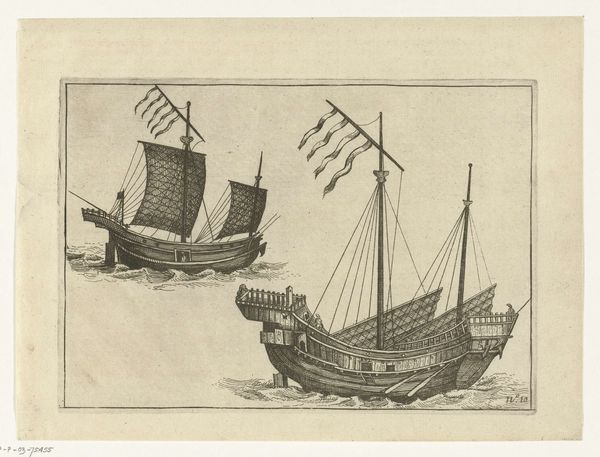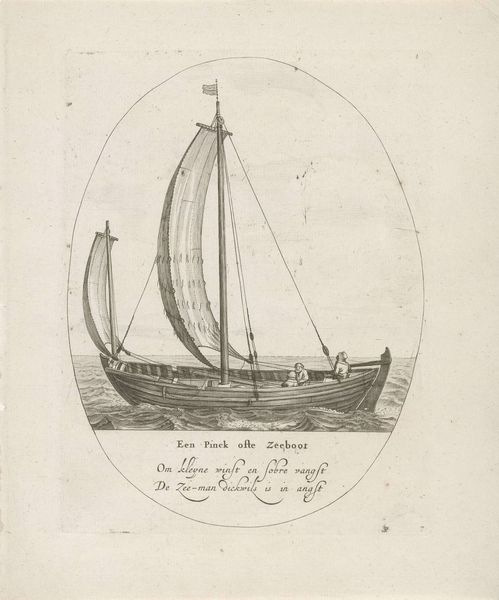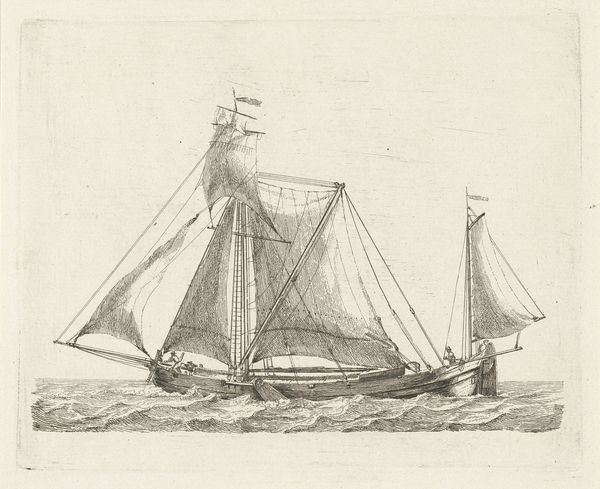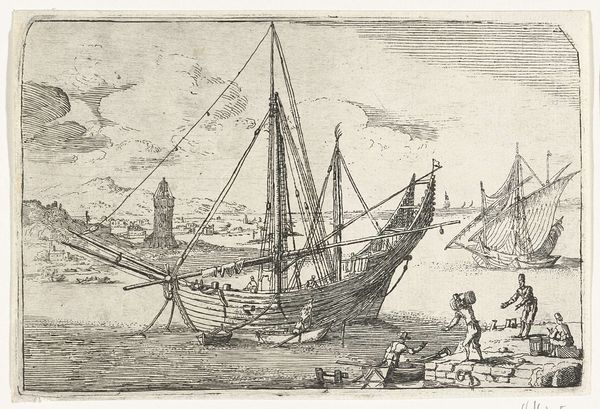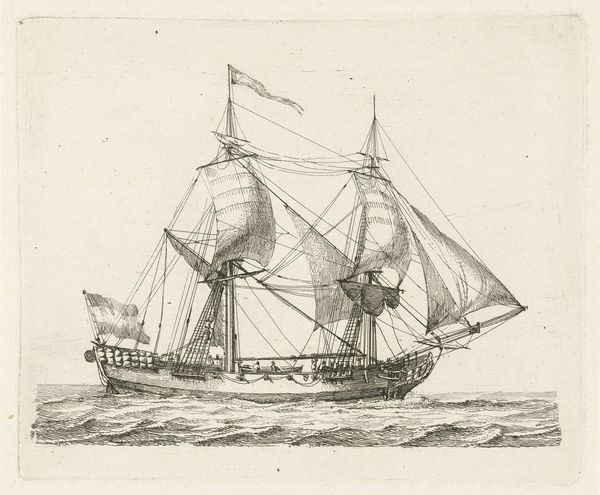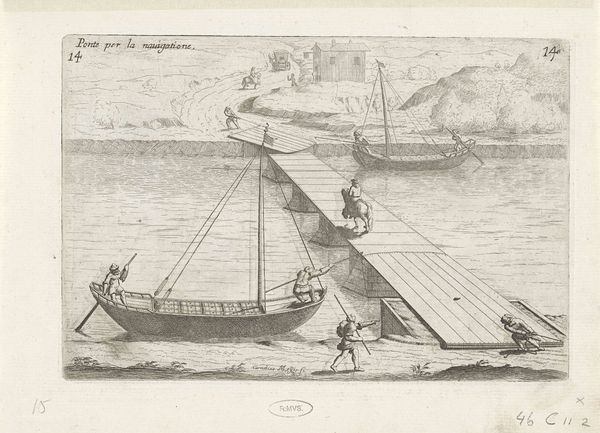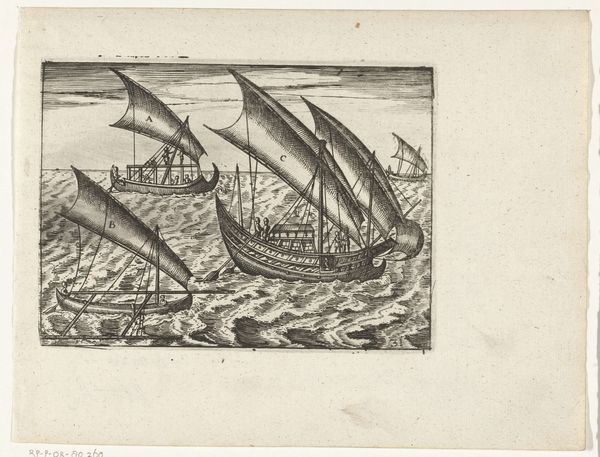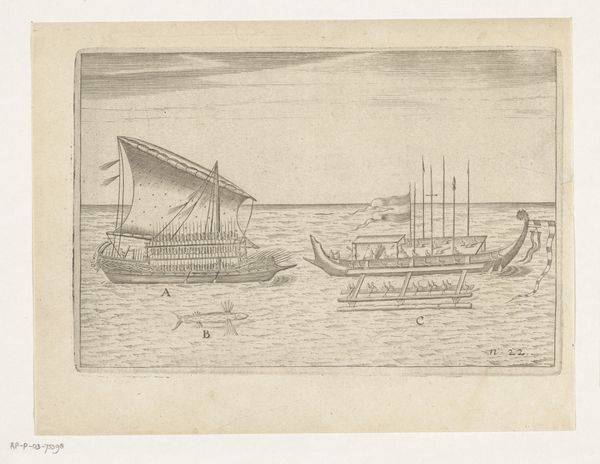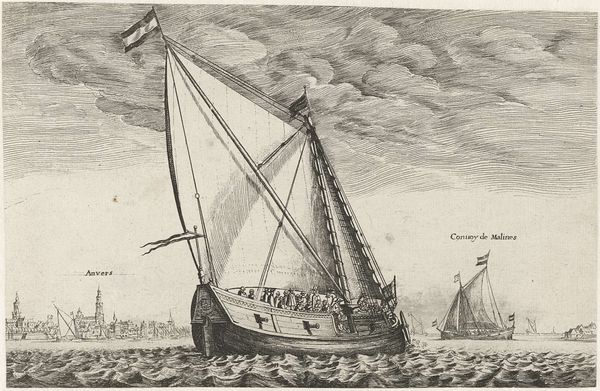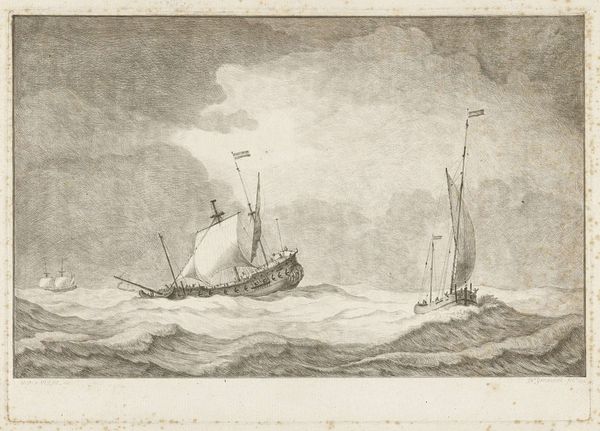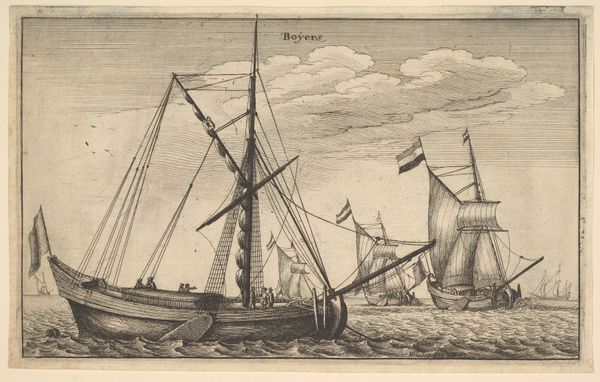
print, engraving
# print
#
asian-art
#
landscape
#
line
#
engraving
Dimensions: height 145 mm, width 225 mm
Copyright: Rijks Museum: Open Domain
Curator: Look at the detail in this print titled, "Een Japans vaartuig, 1600" (A Japanese vessel, 1600), estimated to be made between 1601 and 1646 by an anonymous artist. It’s currently held here at the Rijksmuseum. What stands out to you? Editor: The immediate impression is one of careful observation, though almost sterile. The engraving emphasizes precise lines, almost clinically depicting a Japanese ship and smaller accompanying boats against the patterned sea. The symbol of maritime exchange interests me, and makes me wonder about the cultural relationship between Japan and the Dutch Republic at that time. Curator: Indeed. These types of prints provided Europeans with early depictions—often mediated and biased—of the East. Notice the inscription: "Ung Batteau de Iapan dit Champan". It offers insight into colonialist language, which often misinterpreted or re-categorized Asian cultural symbols according to Western norms. These labels become political tools. Editor: Yes, the re-categorization interests me greatly. A Western gaze interpreting Asian design, and how such representations informed, or rather misinformed, a Western understanding of Japanese maritime identity. Consider the symbolic weight of ships in cross-cultural exchange. Were they seen as merely transport, or were they perceived as powerful markers of identity and technological prowess? Curator: Absolutely. Also think about trade and the unequal power dynamics inherent in colonial relationships, especially considering the print medium. The creation and circulation of these prints themselves become embedded in that dynamic of looking, acquiring, and disseminating knowledge—a form of symbolic conquest, really. Editor: The vessel depicted carries not only goods but also the potential for disseminating ideas—challenging Western-centric world views while simultaneously fueling stereotypes through simplified representation. The lack of depth contributes to the impression. Curator: The stylistic simplification, paradoxically, both informed and distorted European perspectives, while simultaneously reinforcing existing cultural hierarchies. The clean lines of this landscape betray complicated, cross-cultural struggles for power. Editor: Pondering these layered symbols, the simple image reveals itself to be full of culturally-charged and enduring meanings about human contact. Curator: A testament to how the visual can shape, and often warp, global narratives, and, of course, what we learn if we examine these cultural symbols.
Comments
No comments
Be the first to comment and join the conversation on the ultimate creative platform.
